Quintessential Québec City
This slice of France in North America feels like petit Paris
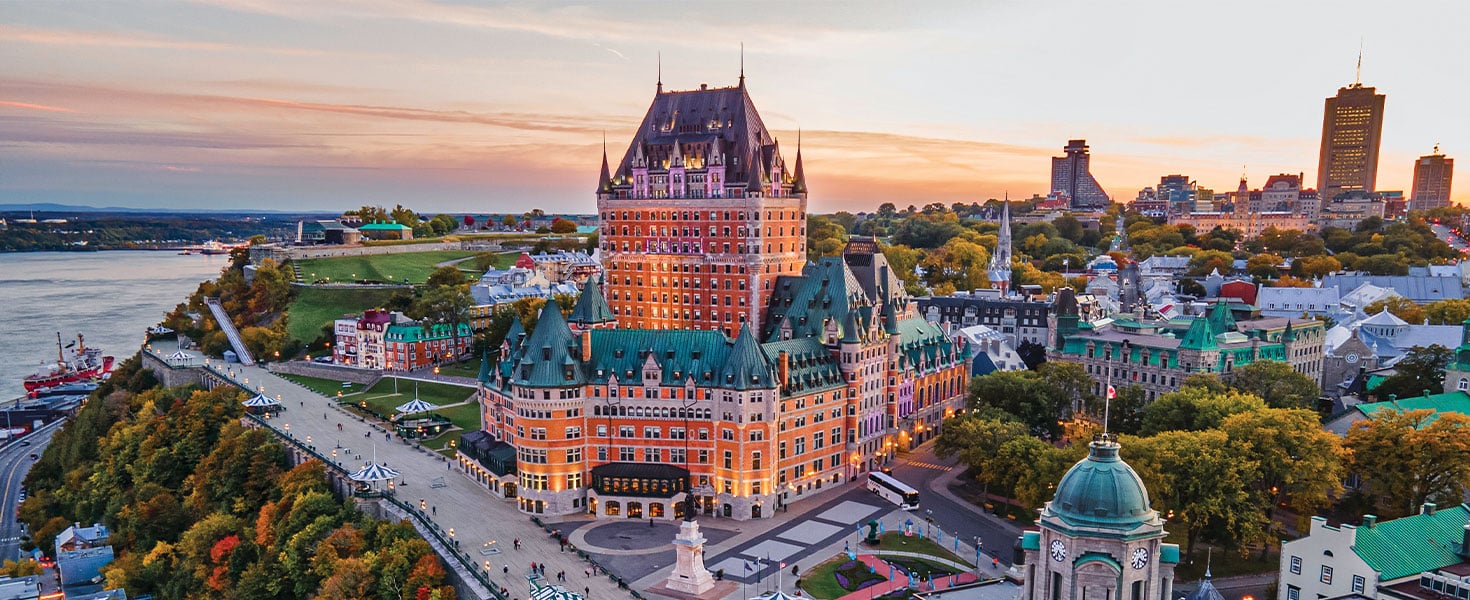
It’s barely 8 o’clock on a crisp spring morning and my tour guide, Denis Laberge, is full of energy and excitement. A Québécois for more than 60 years, he knows every corner of this provincial capital in eastern Canada and every bit of its history.
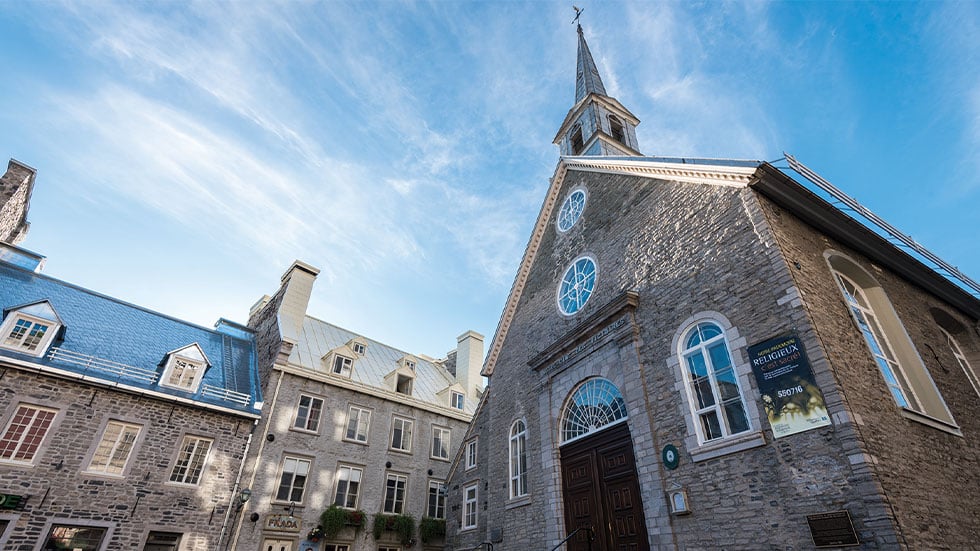
Notre-Dame des Victoires church; Photo by Jeff Frenette Photography
We start at Place Royale in the Lower Town of Old Québec, right in front of the Notre-Dame des Victoires church, one of the oldest churches in North America, and dive into meandering streets of yesteryear. The aromas of brewing coffee and fresh pastries permeate the air. A cup of joe in one hand and a crispy croissant in the other, I follow Laberge down the cobblestone paths and through centuries’ worth of stories.
“You cannot live in Québec City and not love it,” Laberge tells me. “Just look at this beautiful French architecture,” he says, gesturing toward the surrounding buildings. “Doesn’t that make you feel that you’re in Europe?”
As I marvel at the gabled roofs and stone facades, I indeed feel as if I have landed in Paris rather than a city in Canada. In fact, it’s hard to believe you’re not in France when you’re greeted with “bonjour” in every store. (Though French is the official language in Québec, most residents speak English as well.) Wine, baguettes and cheeses here taste just like the French countryside itself, minus the jetlag.
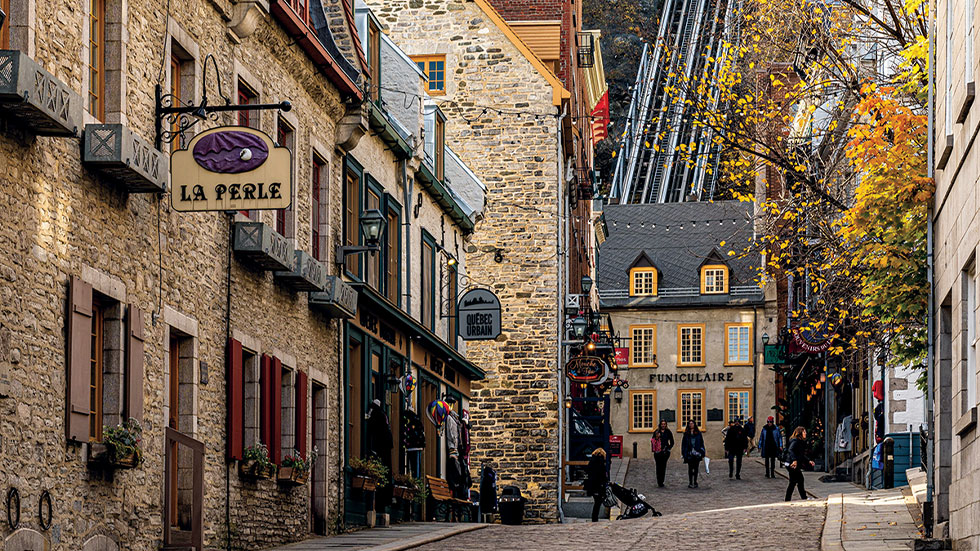
A funicular connects Québec City’s Lower and Upper Towns; Photo by Jeff Frenette Photography/Destination Québec Cité
PUTTING THE CITY ON THE MAP
Québec City was founded by French explorer Samuel de Champlain in 1608 as a fur trading post with the intention of it becoming the capital of New France. The settlement, however, didn’t succeed fully at first.
“We can’t grow because we don’t have women,” later settlers wrote to the king. So, Louis XIV put out a call to Frenchwomen offering to pay their passage and dowries if they sailed across the Atlantic to marry and start families in New France. About 800 poor but brave souls, who weren’t afraid of a long journey with an uncertain ending, answered the call, as Laberge tells the story. Known as the “king’s daughters,” these women brought with them their language, traditions and cooking recipes. They must also have brought a lion’s share of perseverance, because even after the British seized the city in 1759, Québec managed to preserve its French identity right up to the present.
As morning rolls on, Laberge takes me to Avenue Petit-Champlain, a picturesque street with many boutiques owned by local artisans who live above their shops. While I admire the vibrant storefronts, Laberge shares another story. “In the 1960s, this street was in bad shape,” he says. “The buildings were falling apart, and the city decided to demolish them and build a parking lot!” he exclaims indignantly. But local entrepreneurs Jacques de Blois and Gerry Paris wouldn’t let it happen. The following decade, they began buying and renovating the houses, first with their own money and later with the city’s help.
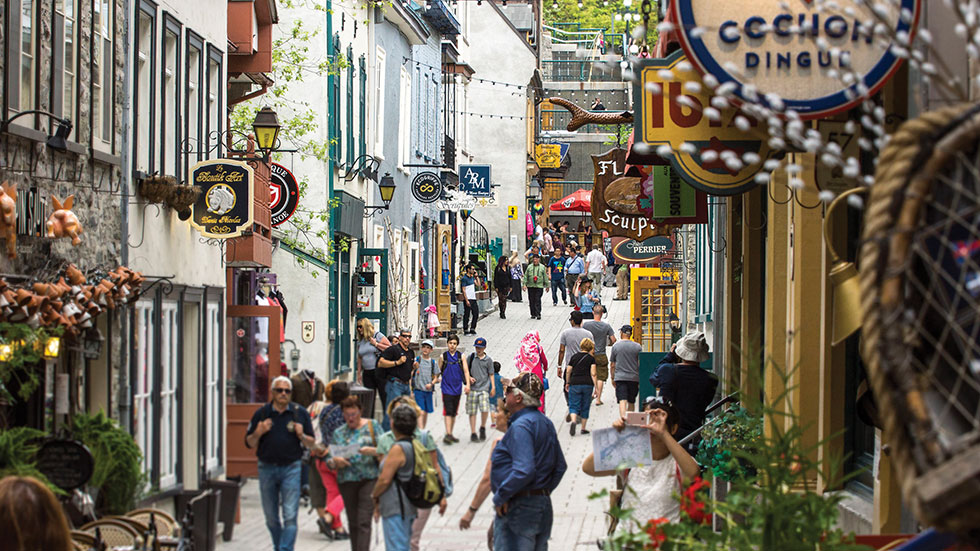
Champlain, a picturesque street lined by boutiques; Photo courtesy of Destination Québec Cité
“Today, Avenue Petit-Champlain is the most beautiful in all Québec,” Laberge says. That’s especially so in December, he adds, when it’s lined by trees with twinkling lights and sometimes blanketed in freshly fallen snow.
The avenue’s storefronts beckon: Atelier La Pomme with colorful dresses and Bijouterie Jules Perrier with bracelets and pendants. When I pass by Fluchos, I can’t resist popping in to look at a pair of tall Victorian-style lace-up boots—and make a mental note to come back to try them on.
In the afternoon, we take the funicular to the more modern Upper Town. “Modern” is a relative term. Québec’s famous and perhaps most-photographed attraction, Fairmont Le Château Frontenac, which overlooks the Saint Lawrence River, is more than 130 years old.
William Van Horne, president of the Canadian Pacific Railway, located beautiful hotels along his lines and built this one in the “chateauesque” style, with steep pitched roofs and numerous towers, to resemble the iconic castles of the Loire Valley in central France.
When I finish snapping pictures of the timeless landmark, we take a walk on the Terrasse Dufferin, a boardwalk overlooking the city. Busy photographing the vistas, I don’t notice how the afternoon flies by. Now we must part ways—but not before I ask Laberge for a few recommendations for dinner. The dining scene in Québec is sizzling, but it proves to be even hotter than I imagined.
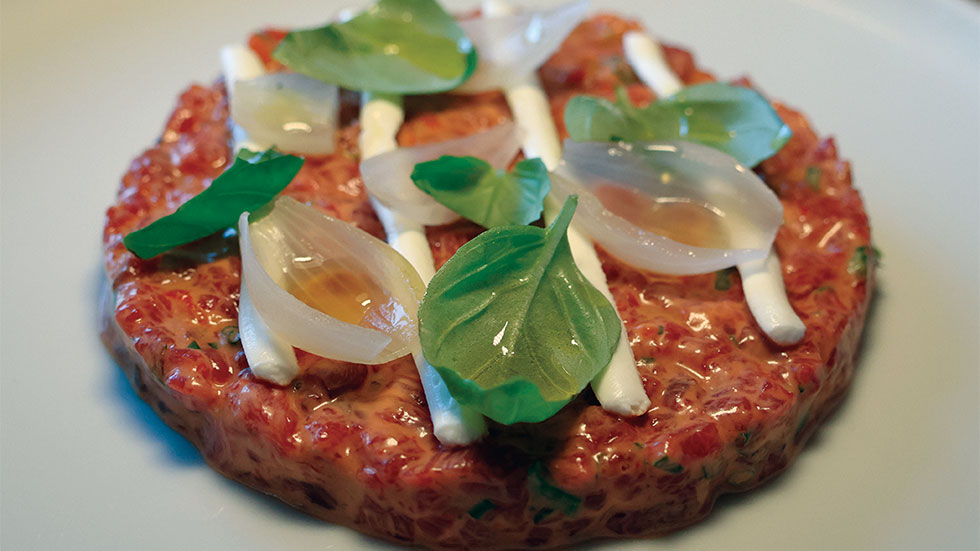
Bison carpaccio served at Melba; Photo by Lina Zeldovich
QUÉBEC CUISINE HEATS UP
Known for classic French cuisine like onion soup and duck à l’orange, Québec now dishes out a whole new level of gourmet delights. French cuisine has always been praised for its ingenuity and innovation. Today’s Québec chefs are evolving it into the 21st century, fusing French cooking techniques with global spices and locally farmed produce and forest-foraged ingredients.
Settling down for an early dinner at Melba, a recent addition to Québec’s restaurant scene, I browse a mouthwatering list of small plates. Signature bison carpaccio and steak bleu d’Elizabeth prove wise choices, both succulent and satisfying. So, too, does the chocolate Basque cake with a tinge of hazelnut—a luscious finishing touch.
For dinner on another day, I head to Verre Pickl’. Owned by Jérôme Gilpin of Québec and Alexandra Romero of Mexican heritage, the restaurant serves up French-Mex cuisine—a happy marriage of flavors. The couple likes to surprise guests with their menus. My first dish turns out fragrant and fiery.
“This is scallops in aguachile—a traditional Mexican broth made with serrano peppers, lime juice, cilantro and tomatillo,” Gilpin recites the unique mix of ingredients. The spicy broth sears my lips, but the tender scallops are so delicious, I can’t put my spoon down. Gilpin soothes the burn with the next bite: a foie gras donut with guava jelly topped with a hibiscus flower. When the richness of foie gras fuses with the sweetness of guava, wrapped into the softness of the doughnut, I realize I’ve just discovered a gourmet comfort food I now must try making at home.
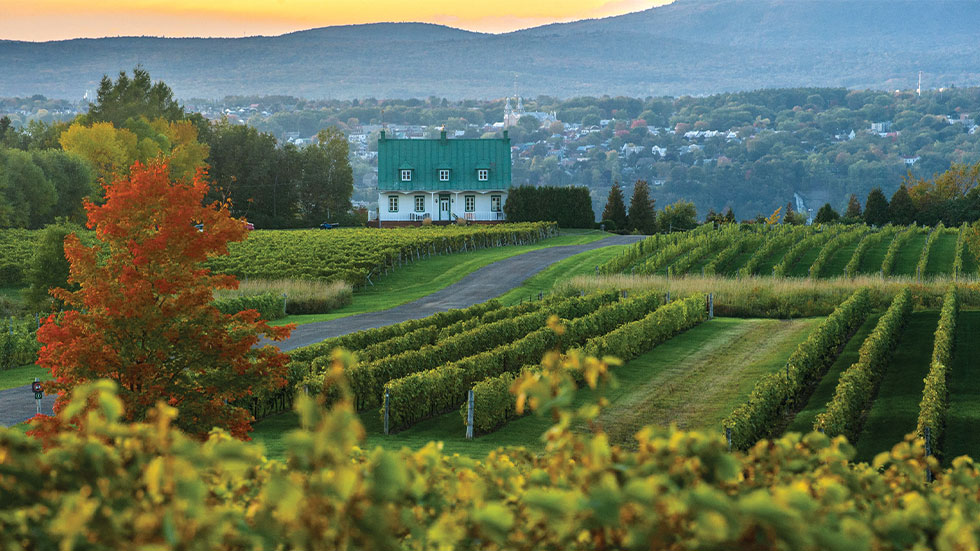
Île d’Orléans boasts numerous vineyards and family farms; Photo by Francis Fontaine/Destination Québec cité
I save some time during my trip to visit Québec’s countryside: Île d’Orléans, an island in the middle of the Saint Lawrence River, where family-owned farms and vineyards dot the landscape just as they do in France. They make distinctly local specialties: Fromagerie Ferme Audet serves ice creams made from goat milk; Cassis Monna & Filles brews sweet black currant liqueurs; and Confiturerie Tigidou cooks jams exclusively from the island’s berries.
Another uniquely Québec day flies by. When I hit the pillow that evening, I dream of fragrant cassis, chocolate cake and lacey vintage boots—and of the brave Frenchwomen who brought their culture to North America for all of us to love and cherish.
QUÉBEC STAYS FAIRMONT LE CHÂTEAU FRONTENAC
The historic Fairmont Le Château Frontenac, with its unbeatable river and city views, is the most famous of all Québec hotels. Recently renovated, this luxury spot has hosted many illustrious people, including former French President Charles de Gaulle, Princess Grace Kelly of Monaco, Winston Churchill and Queen Elizabeth II.
AUBERGE SAINT-ANTOINE
Family-owned Auberge Saint-Antoine nestles in the midst of Québec’s Lower Town, minutes from Notre-Dame church. A high-end hotel and museum in one, it displays numerous archaeological relics on its walls.
